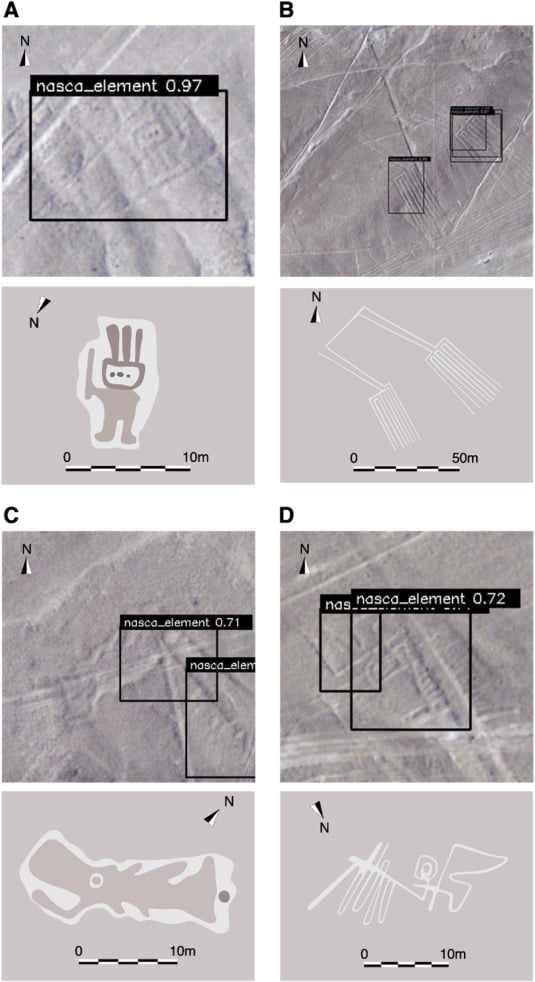Archeology may focus on illuminating the past, but it has long deployed advanced technologies in its activities. In recent years, archaeologists have used robots, LiDARs, drones and now artificial intelligence.
Researchers from Japan’s Yamagata University have used this technology to discover four new Nazca Geoglyphs in Peru. They were carved into the rugged landscape of the modern south Peru between 500 BCE and 500 CE by the ancient peoples of Nazca. Numbering in the hundreds, they represent a myriad of creatures, real and fantastic, including orcs, two-headed serpents, llamas and curious humanoid figures.
The latest findings, published in the July issue Journal of Archaeological Sciences, are an extension of work that Yamagata researchers began in 2016 (although the first investigations began in 2004). First, they used aerial photography with a ground resolution of 0.1 meters per pixel to capture the entire area of the Nazca Plateau, about 150 square miles. Then, through a painstaking five-year process, the researchers identified the geoglyphs manually, often verifying their findings with on-site surveys. This final step involved working with IBM to enable AI to discover geoglyphs they had missed in previous searches.

The four new Nazca geoglyphs discovered thanks to AI in Peru. Image: Journal of Archaeological Sciences.
The most recent Nazca geoglyphs show a humanoid figure holding a club, a large-mouthed fish, a 255-foot-long pair of legs, and a bird (skeletal and abstract in an almost Alex Calder-like way).
“Our approach allows DL [Deep Learning] to learn image representations with better generalization performance, enabling the discovery of targets that have been difficult to find in the past,” the researchers wrote in the paper. “Our method contributes to archeology by establishing a new paradigm that combines field surveys and AI, leading to more effective and efficient investigations.”

Geoglyphs can be classified into three main types: figurative, geometric and linear. Image: Journal of Archaeological Sciences.
Researchers believe that using AI to identify new geoglyph candidates is 21 times faster than the previous naked-eye method. Given Yamagata University’s most recent survey of a limited northern area of the Nazca Plateau, expect its machine learning models to make new discoveries in the near future.
The Nazca geoglyphs were first discovered by Peruvian archaeologist Toribio Mejia Xesspe in 1927 and received renewed academic attention in the 1980s. In 1993 the Nazca geoglyphs were recorded as UNESCO World Cultural Heritage Site.
Follow Artnet News on Facebook:
Want to stay one step ahead of the art world? Subscribe to our newsletter to receive breaking news, revealing interviews and incisive reviews that move the conversation forward.
